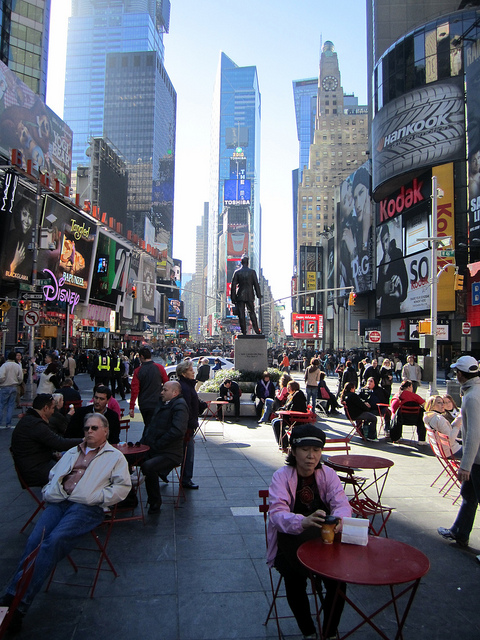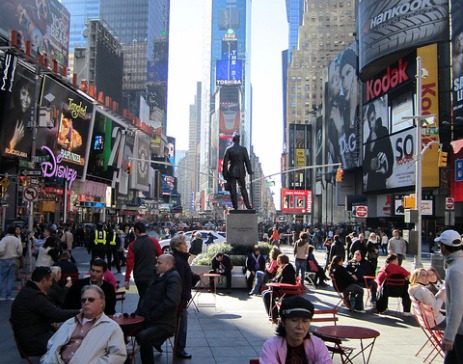 New York City won recognition for creating a public oasis in the middle of busy Times Square.Photo: La Citta VitaMirror, mirror on the wall, which are smartest communities of them all?
New York City won recognition for creating a public oasis in the middle of busy Times Square.Photo: La Citta VitaMirror, mirror on the wall, which are smartest communities of them all?
When it comes to intelligent growth, the United States Environmental Protection Agency says the smartest cities are New York, Baltimore, Portland, Ore., and San Francisco. The EPA also commended 20 towns in rural Maine.
Those communities have received the EPA’s Smart Growth Awards for innovation in everything from creating small public spaces in densely packed urban cores to investing in compact communities and preserving forests and farmland.
The Big Apple took honors for overall excellence. “New York City has achieved a relatively small carbon footprint, given its size, through its commitment to creating compact and walkable neighborhoods,” the EPA said.
The agency gave New York kudos for promoting bicycling — an activity not for the faint of heart in that city — by building dedicated bike lanes. The city has also carved out public spaces in urban jungles like Times Square, where pedestrians can take a breather at tables and chairs set out on an island of calm between sidewalk and street. (I came across one of these mini-parks on a recent trip to New York, where I found New Yorkers sipping coffee or texting at their leisure as the tourist throngs swarmed around them.)
Portland, known for environmentally sensitive urban planning, won EPA recognition for its “Making the Greatest Place” growth plan, which seeks to accommodate the 600,000 people projected to be living in the greater urban area by 2030.
“This blueprint acknowledges population growth as inevitable while simultaneously expressing the region’s intent to incorporate growth within existing urban areas as much as possible and expand the urban growth boundary only when necessary,” the EPA said. “It calls for maintaining connections with nature, preserving existing neighborhoods, strengthening employment and industrial areas, and concentrating growth in designated centers.”
In Maine, 20 towns linked by the Route 1 highway — a commercial and tourist byway — collaborated in an effort to preserve the region’s rural character.
The EPA praised San Francisco for transforming a seedy alleyway in a somewhat derelict part of the South of Market area into vibrant public space lined with restaurants, shops, and a farmers market.
“Since its completion in 2008, Mint Plaza has become a model of adaptive public space design and a successful example of converting an automobile-focused and previously unsafe alleyway into pedestrian-only civic space,” according to the EPA. (I can attest to that.)
Finally, Baltimore won the EPA award for a green building design that rehabilitated an historic building into a mixed-use residential and commercial space that revitalized the surrounding neighborhood.



